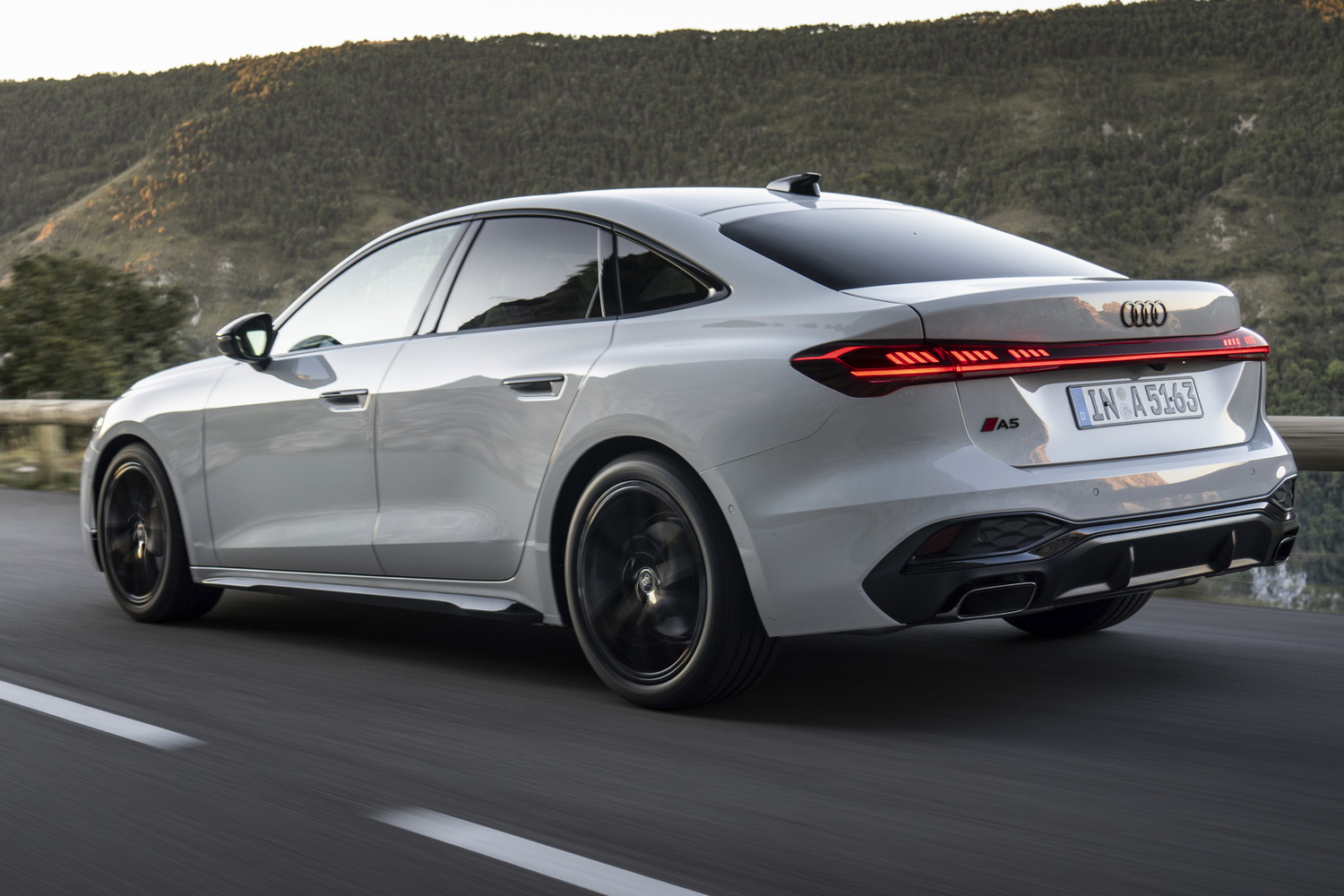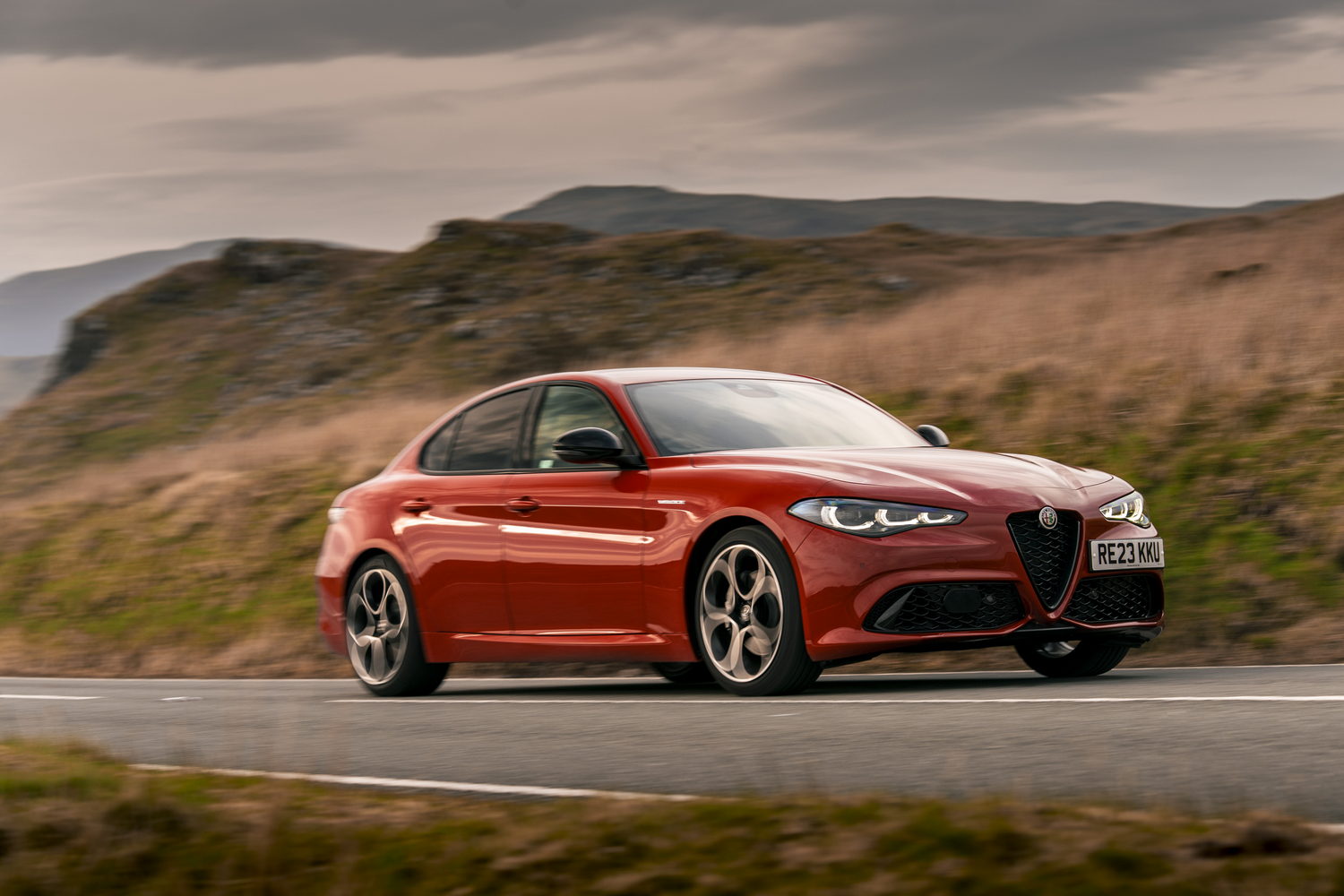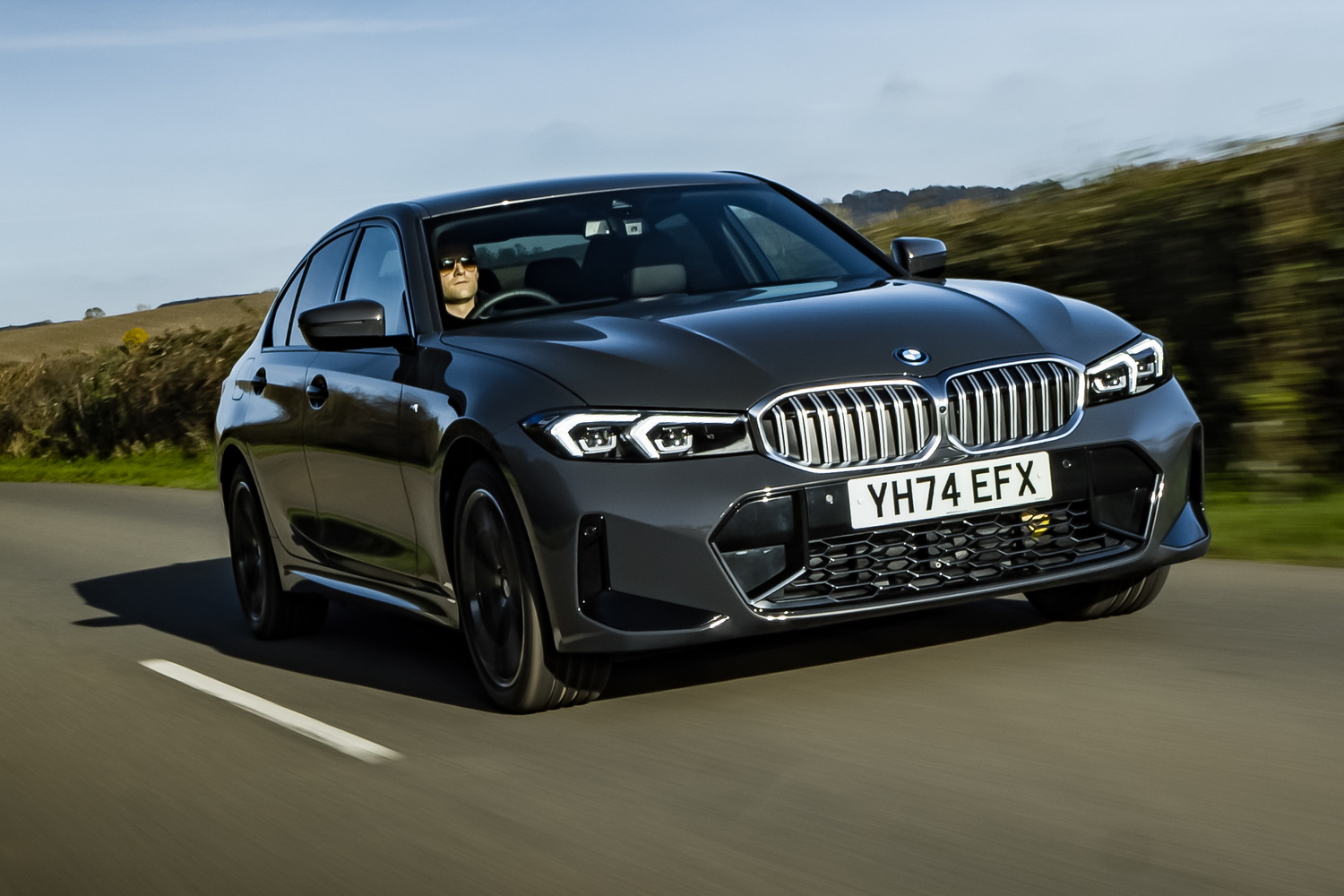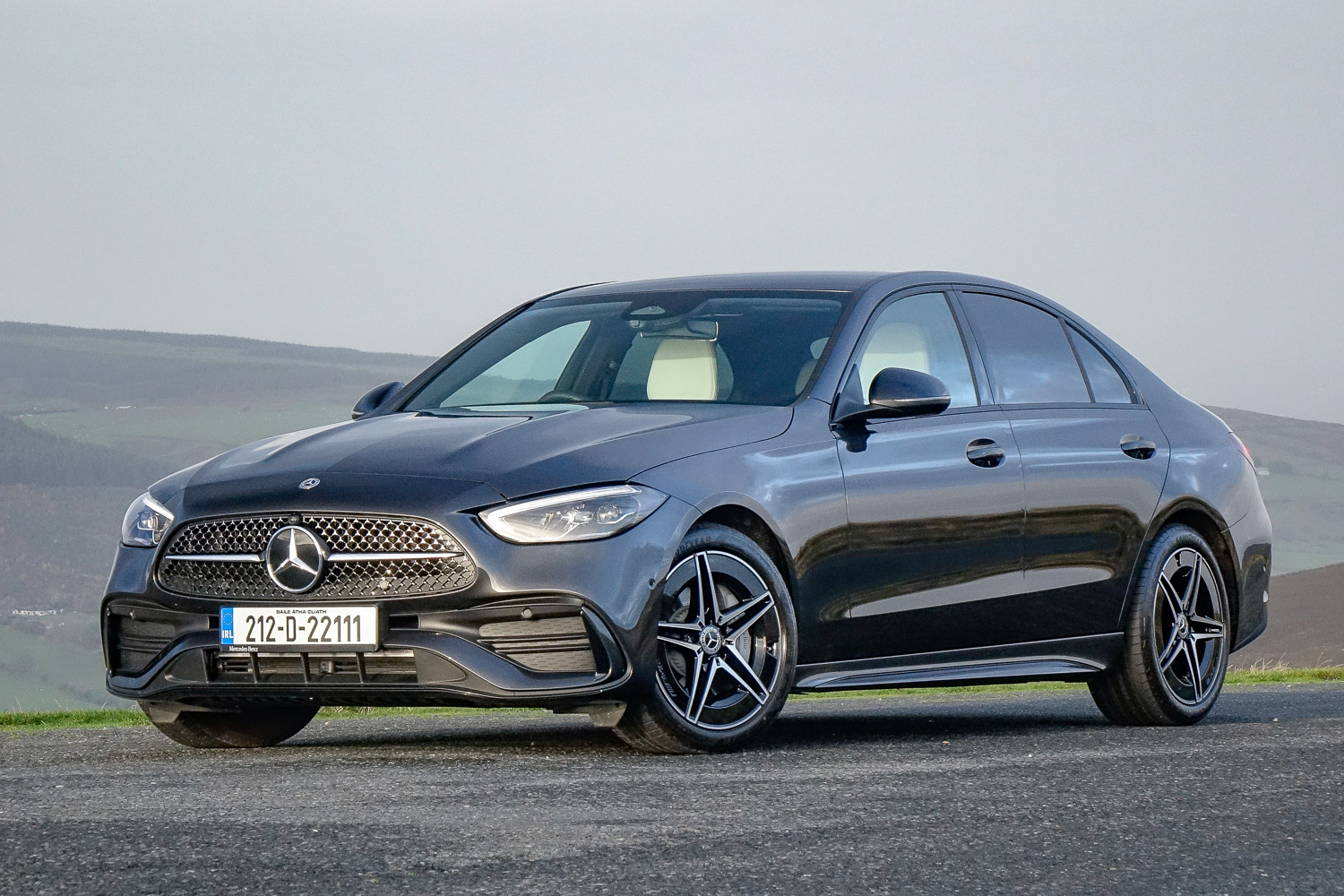We’ve already driven Audi’s A4-replacing A5 as an Avant estate with the diesel engine, but here’s our chance to try it out in saloon format. Well, we say that, but while Audi insists on calling it a ‘limousine’, the boot lid on this car is hinged at the top and so it’s technically a fastback. Indeed, Audi would normally call such a body a ‘Sportback’ as such, but the company is focusing first on reinforcing the message that the new A5 is the successor to the A4, so it wants to call this a saloon to keep the link between the two cars subconsciously at the forefront of customers’ minds.
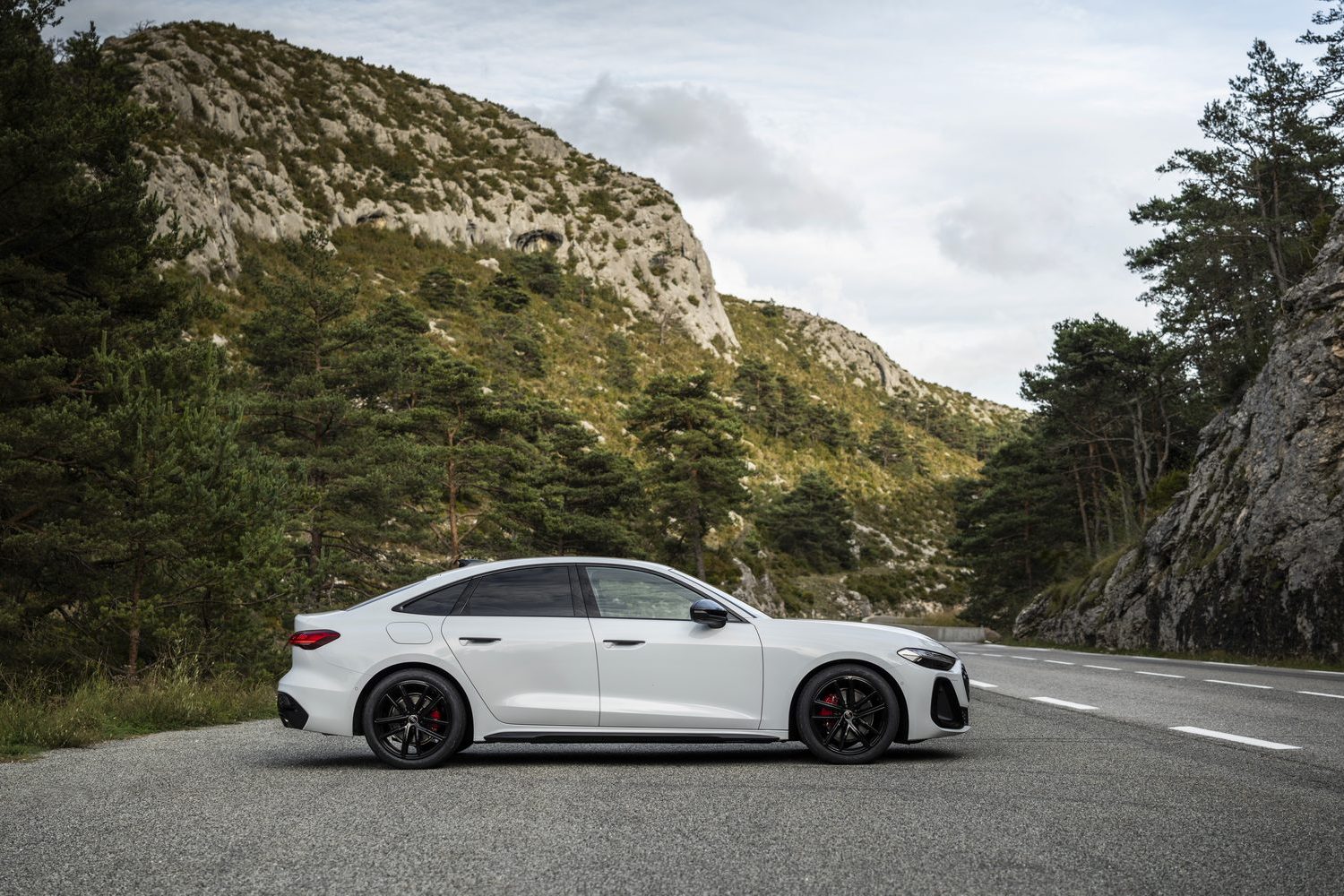
Anyway, we’ve driven the A5 in its highest-ranking Edition One S line specification on UK roads as a 2.0-litre turbodiesel, to see if it can compete with the BMW 3 Series and the Mercedes C-Class.
How much is the Audi A5 in Ireland?
The A5 range starts at €55,700 for the 150hp TFSI petrol model with 150hp, but for just a slight increase (to €57,000), buyers can have the 204hp TDI as tested here, which also uses 48-volt mild-hybrid technology to reduce its CO2 emissions and fuel consumption. There’s also a corresponding 204hp version of the TFSI engine starting from €58,500, but the TDI will make most sense in terms of running costs.
That opening price for the Audi is undeniably chunky, but it compares well to the €57,705 BMW 3 Series entry point and the €58,610 minimum you’d need to sit in any Mercedes C-Class, especially as in the Merc’s case you’ll only end up in a 170hp petrol car, not a 204hp diesel (the Beemer’s a bit different, though, as the entry-level model is the 292hp 330e plug-in hybrid). Bear in mind, though, that a higher spec like our test car’s pushes the A5 up to the level of €66,000 and more.
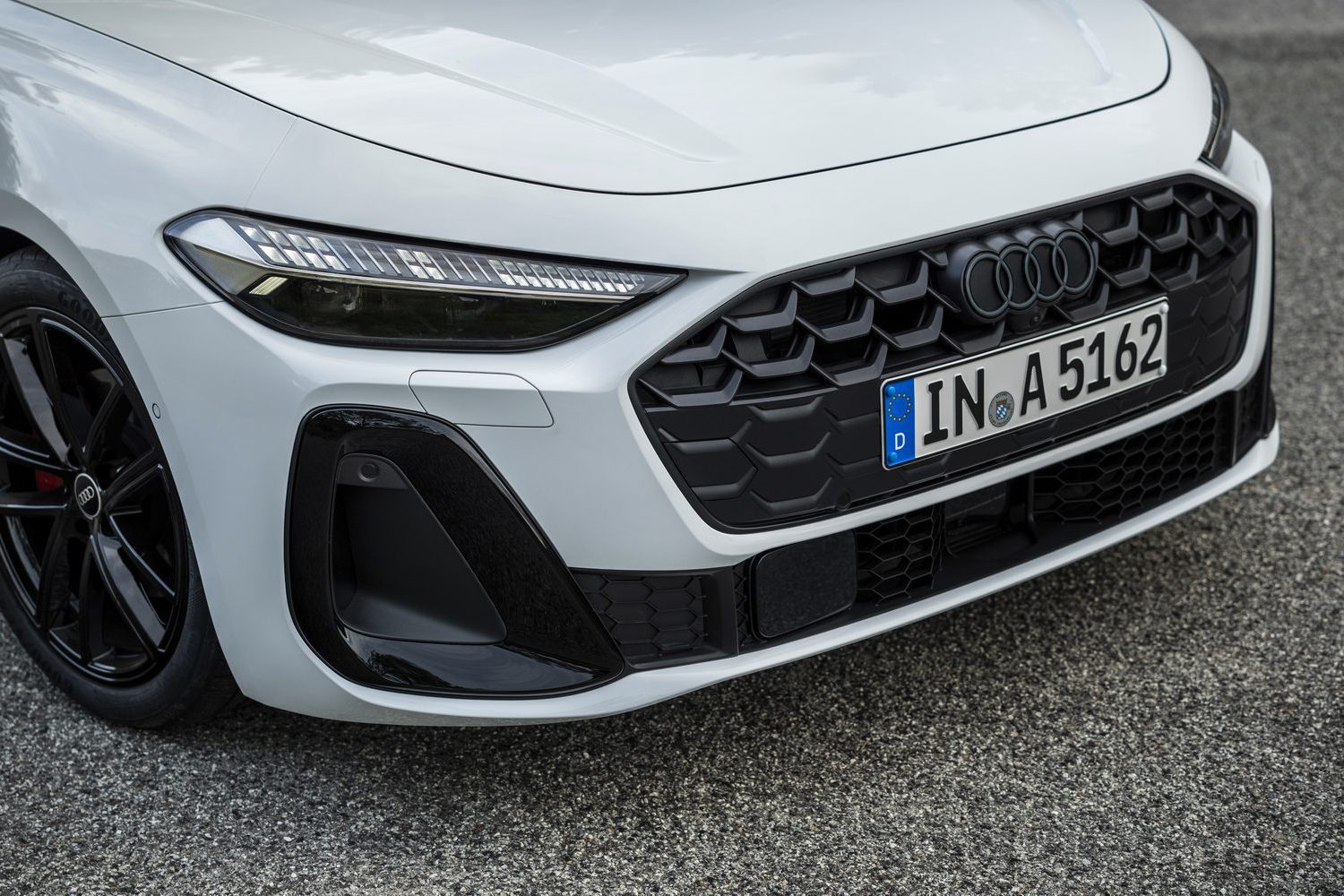
What does the outside of the Audi A5 look like?
Audi seems to be adopting a smoother, sleeker corporate style for all its models at present, perhaps influenced by the appearance of electric vehicles in the portfolio like the A6 e-tron. This means the A5 isn’t quite as angular as the outgoing model of Audi A4, which could lead to accusations that it’s not as aesthetically distinctive as it might be. However, we don’t find it unattractive, what with its slippery profile (leading to an impressively low coefficient of drag of just 0.27) and the calling card of 2020s car design, a full-width light strip at the rear, although those big, silver-outlined air intakes at the front on grander models won’t be to all tastes.
A look inside the Audi A5
Quality-wise, in terms of the fit, finish and feel of the materials used in the Audi A5’s cabin, it’s every inch the passenger interior standard you would expect of the marque with four rings. Everything operates in a slick and pleasing fashion, and there’s an implied sense of solidity to the construct of the dashboard as it blends into the door cards.
When it comes to space, the A5 is OK, albeit not cavernous. With the driving seat in position for someone of around six-foot tall, kneeroom in the second row is somewhat limited and there’s the usual problem of nearly any non-EV, in that there’s a big transmission tunnel in the centre-rear footwell which means the Audi is more of a four-seater in reality. Headroom is also better in the Avant model, if you ever need tall people to sit in the back.
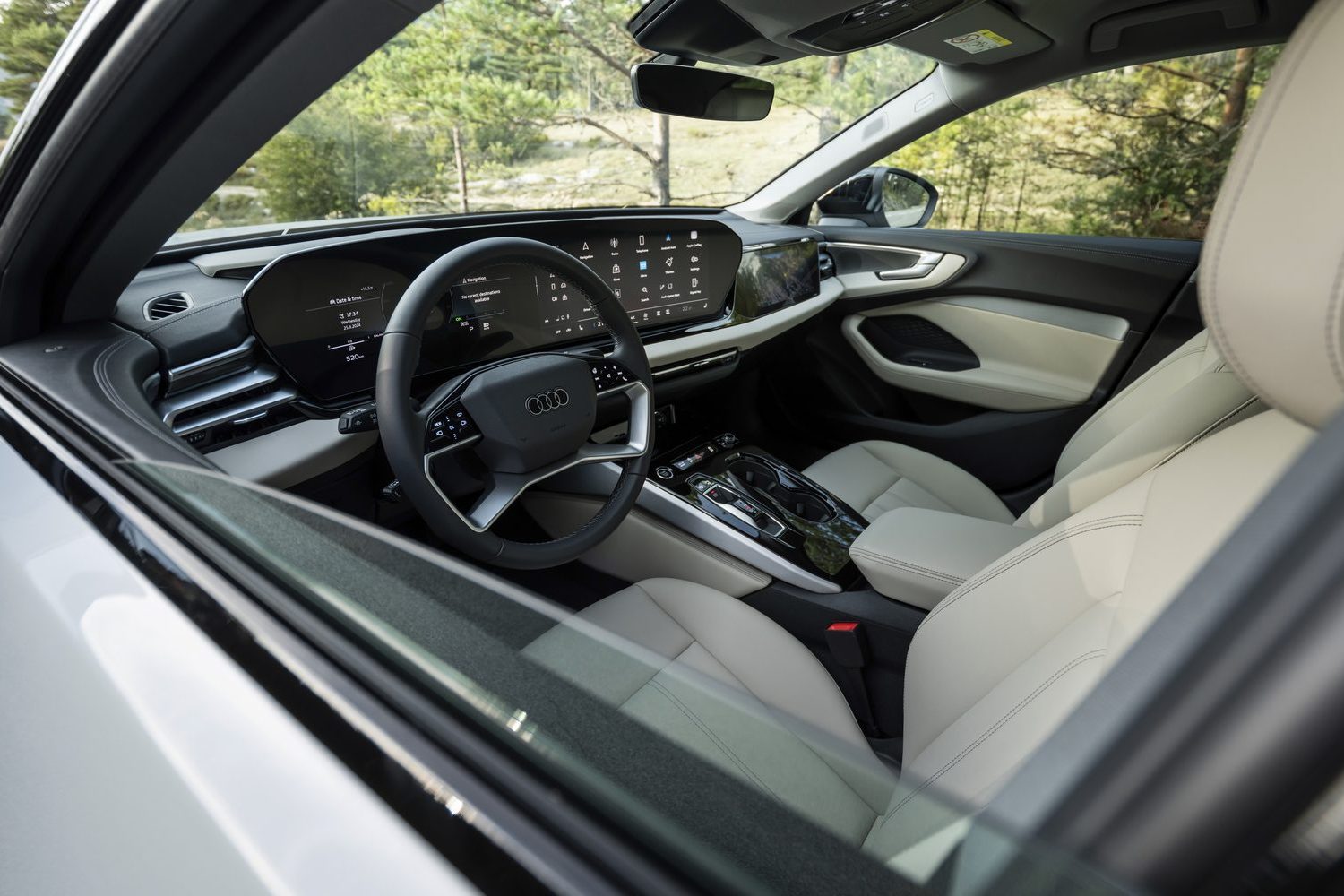
And then there’s the boot. That huge, sloping tailgate does make for an easier loading aperture (in comparison to a traditional saloon’s boot), but when it comes to the stated capacity, at 417 litres it’s some way off the more conventional 3 Series saloon’s 480-litre figure. Even with the rear seats folded down, the A5 only manages 1,271 litres, which isn’t massive, although at least that bench is split 40:20:40 for maximum practicality.
The Audi A5’s on-board technology
All versions of the A5 family, including the S5, have the huge digital interface as their centrepiece. It’s called the Digital Stage and features OLED technology, for both a standard-fit 11.9-inch instrument cluster and the big 14.5-inch infotainment touchscreen. You can even upgrade to have a 10.9-inch passenger touchscreen for the front-seat occupant, as well as a head-up display for the driver, so it’s a seriously high-tech interior. And that’s saying nothing of the eight assorted designs of LED daytime running lamp and taillight signatures you can cycle through, either.
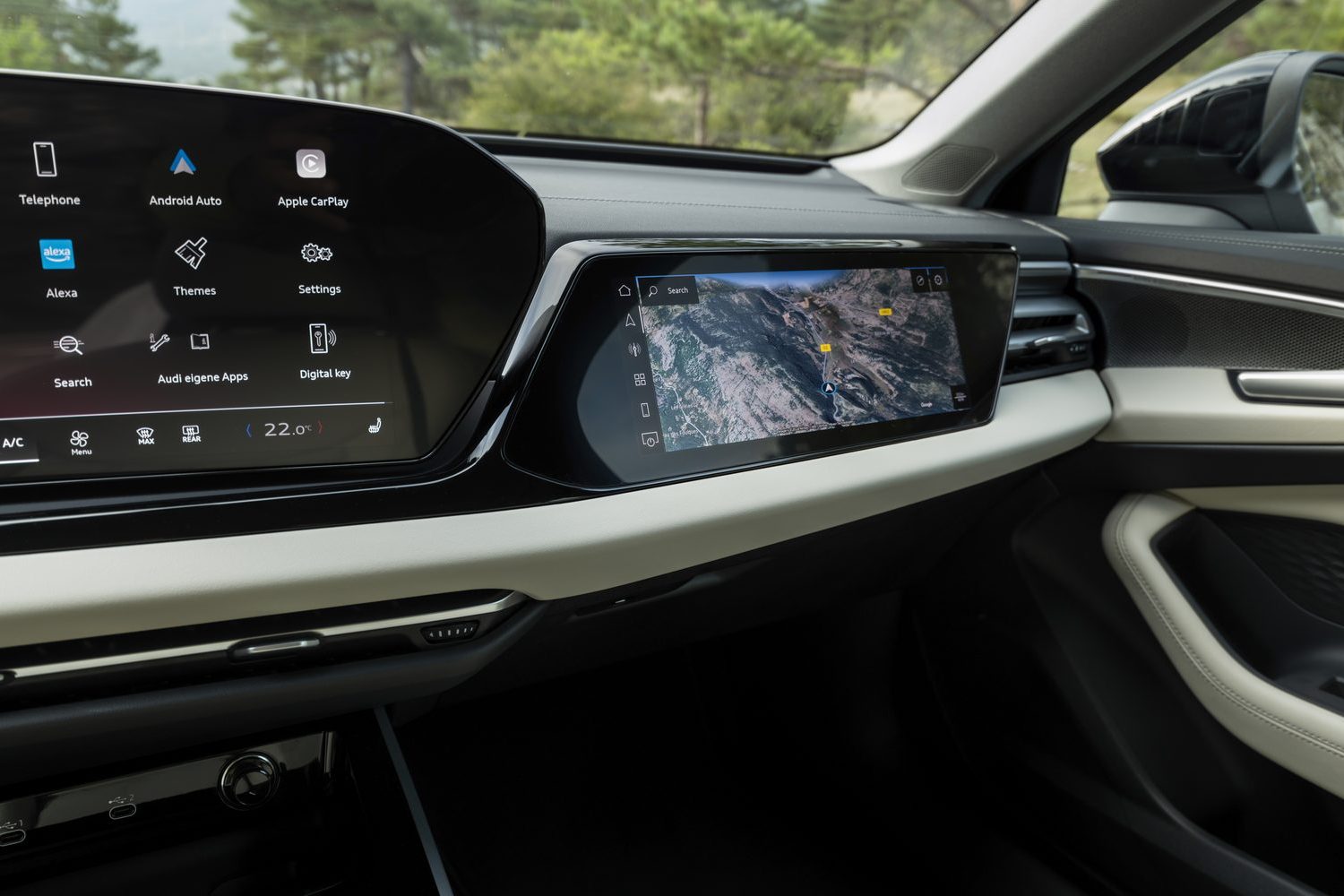
That said, some of Audi’s ‘second-nature’ intuitiveness has been lost because, yes, the A5’s climate controls are now on the screen and not a separate panel of physical switchgear. To be fair, the way the German company has laid the main infotainment menus out and kept the climate functions easily accessible makes this one of the more agreeable touchscreen systems going, but it’s not quite as comfortable to use on the move as the old A4’s interior.
Furthermore, the ‘Virtual Cockpit’ is considerably less configurable than it was before, despite a load of (haptic) buttons sprouting on the steering wheel with which to control it, and if you’re the passenger and you want your heated seat on, the main display is so curved towards the driver that it almost feels illicit for you to be using the screen. So, the tech is all very dazzling, but is it necessarily better than what went before? On that score, we’re not so convinced.
Driving the Audi A5 2.0 TDI
While we could debate the merits of a turbodiesel in the current day and age of ‘electrify everything’, the fact is the 2.0-litre TDI still makes a lot of sense. And it turns out to be a smooth delight to drive, thanks to epic refinement of the drivetrain and brilliant isolation of the passenger compartment from outside noise contributors.
Whether you’re crawling about town on lumpen surfacing or burring along the motorway at 110km/h and more, you’ll hear precious little of what the engine or wheels are up to, nor do you discern anything significant regarding airflow about the cabin. Even if you decide to rev the four-cylinder engine right out, a counter-intuitive act in a turbodiesel anyway and doubly so in one with a massive 400Nm of torque to call upon, the most you get in the cabin is a discreet, background rumble emanating from somewhere behind the front bulkhead.
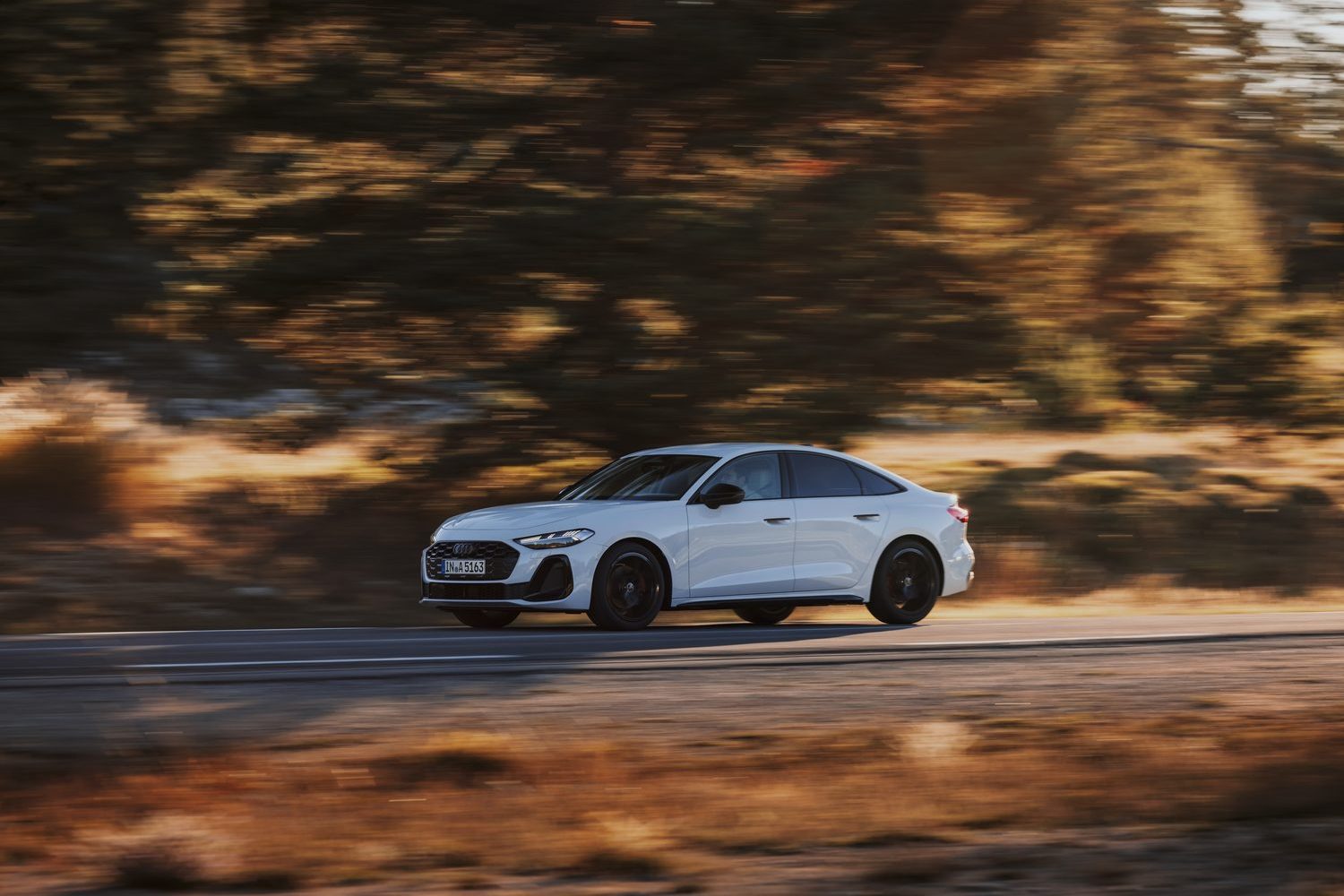
It’s not massively quick, mind, even if you thrash it, but aside from some odd, infrequent hesitance from the S tronic transmission, there’s no lag in asking the A5 for acceleration via the throttle and then the car delivering it through increased forward momentum, so it feels about exactly as strong for performance as a midrange diesel needs to be.
Therefore, the A5 is quiet and super-smooth, but so - to a degree - was the old A4. How have things moved on, then? Well, Audi says that despite the A5 remaining primarily a front-wheel-drive vehicle (unless it’s equipped with quattro all-wheel drive of course), it has tautened up the dynamic experience to make the car feel sharper and more involving to drive. Regrettably, we think that’s a lot of marketing speak which isn’t exactly backed up fully by the way the A5 2.0 TDI steers.
It is, as you would expect of this company, perfectly proficient, with good body control, accurate steering and a sense that both grip and traction are available in abundance. But if Audi thinks it can convince us of the improved handling by providing a slightly gritty ride, it needs to think again. While you don’t hear the suspension working nor the wheels particularly thumping through sizeable imperfections in the tarmac, you most certainly feel it through the base of your seat, while the A5 can often fidget and jitter its way over only moderate ‘washboard’ surfaces at urban speeds.
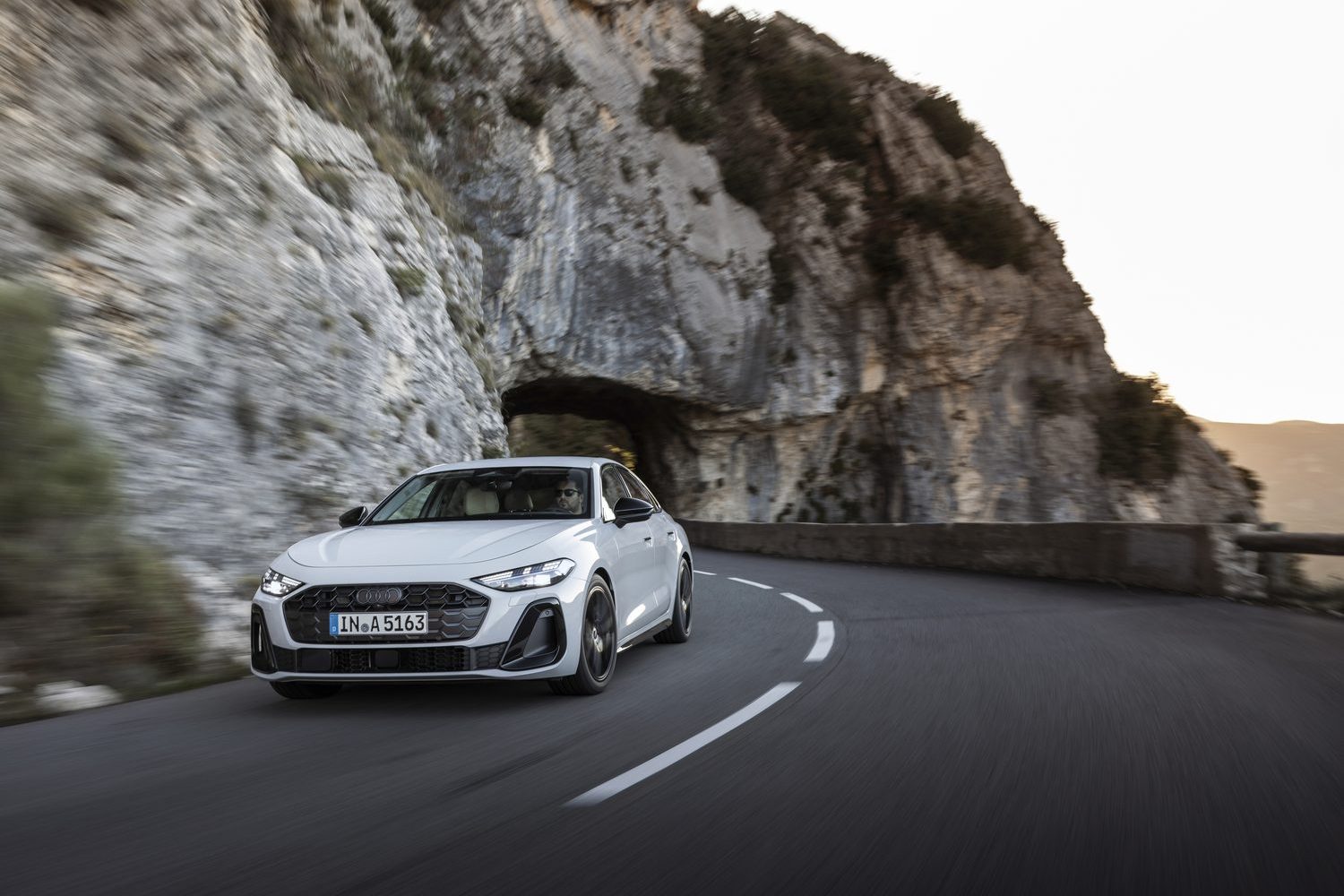
These issues were probably exacerbated by our test car’s 19-inch alloys, with smaller wheels perhaps improving the ride comfort, but at the moment the Audi is not the class leader in this department. It does gain an extra degree of civility on smoother roads and at higher speeds, which seems to be the way with so many modern cars, but it’s a shame it’s not more agreeable around town.
Oh, and if the A5 was supposed to be sporty to drive, even in its more everyday formats like this 2.0-litre TDI, then the steering needs considerably more meat and detail than it has presently. Good brakes on the car, though.
How economical is the Audi A5 2.0 TDI?
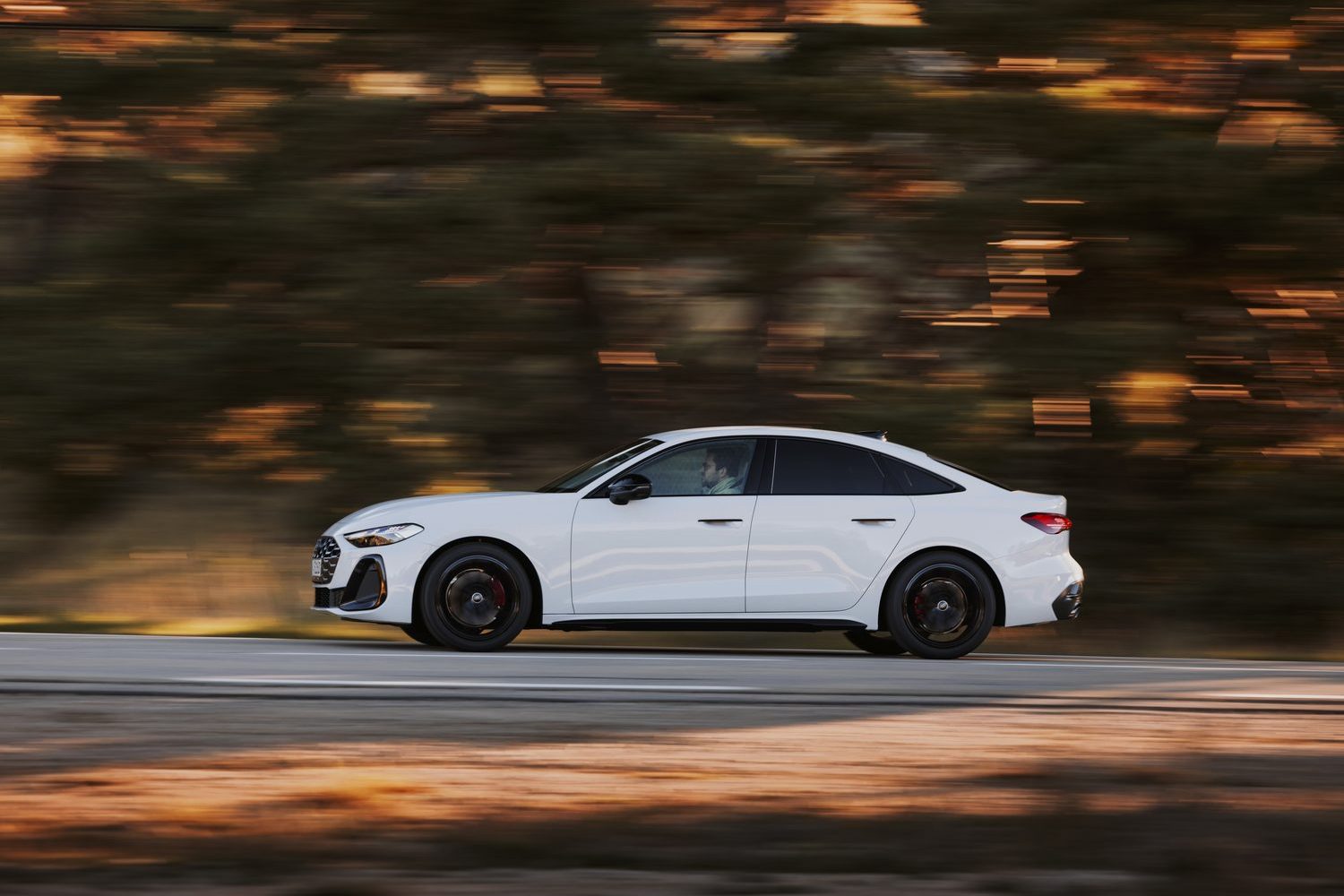
Audi says that the A5 2.0 TDI will do around five to five-and-a-half litres per every 100km it drives, which places it in the 50-60mpg bracket. That’s impressive enough for a car which does 0-100km/h in less than eight seconds. We managed 46.8mpg (6.0 litres/100km) across a variety of roads during an extensive two-hour-plus test route, and given we were pressing the A5 TDI for portions of that then it seems a good real-world return from the Audi.
The reasons you’d buy an Audi A5
As ever with an Audi, a lot of the A5’s appeal is in its sheer showroom desirability and the influence the brand has in the minds of the buying public. Undoubtedly, this car has taken a huge step on technologically, although that won’t please everyone because there’s a good argument to say the A5’s cabin is less easy to interact with than the old A4’s was.
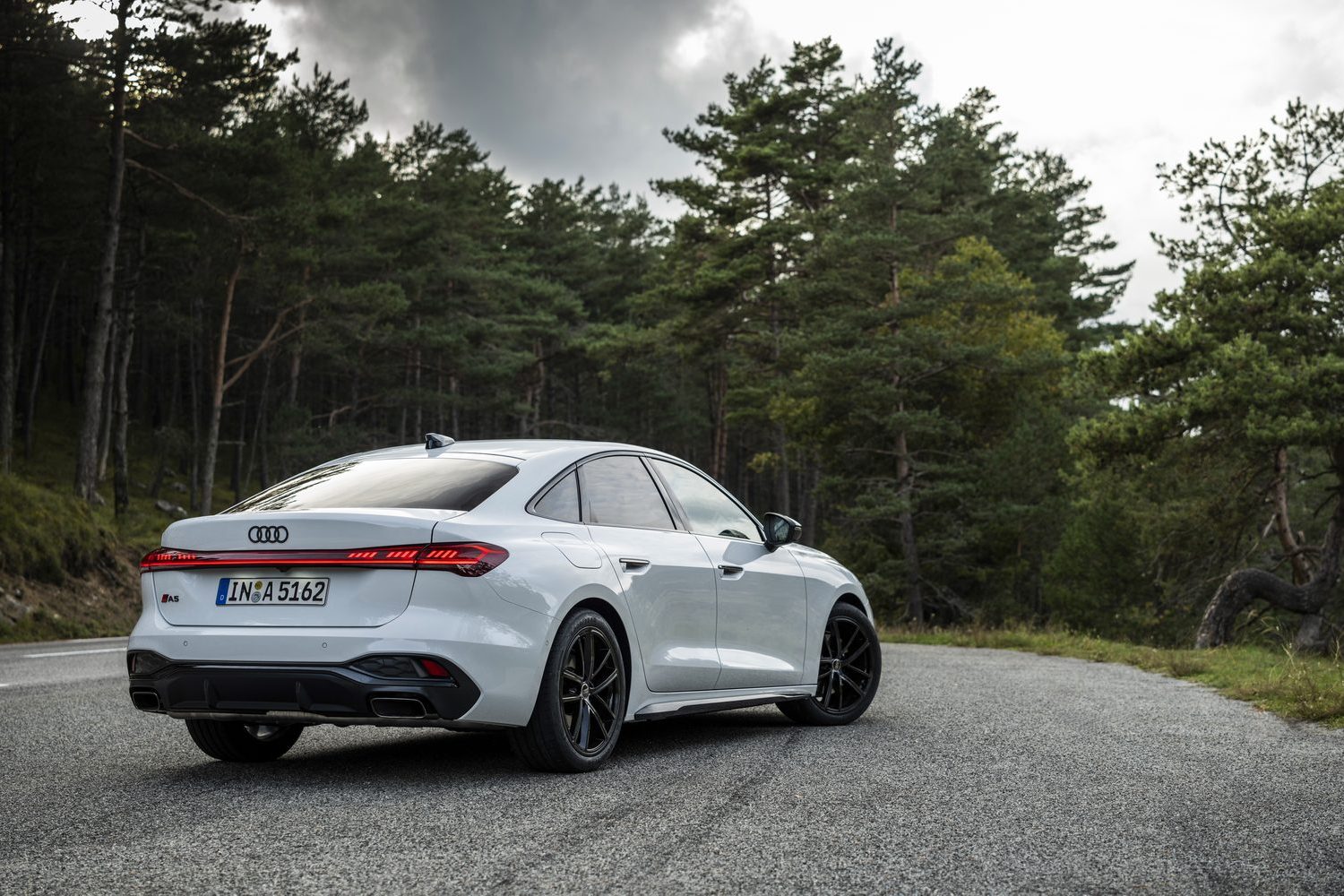
However, even if that doesn’t convince you, or maybe if you find the exterior styling something of a challenge (we don’t, by the way), then the polished way the Audi drives will surely seal the deal. It’s yet another accomplished contender from a company well known for such things.
Ask us anything about the Audi A5
If there’s anything about the Audi A5 we’ve not covered, or you’d like advice in choosing between it and other cars, you can avail of our (completely free) expert advice service via the Ask Us Anything page.

